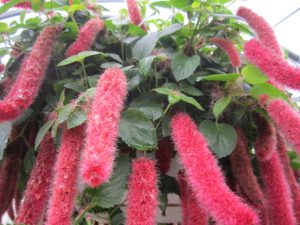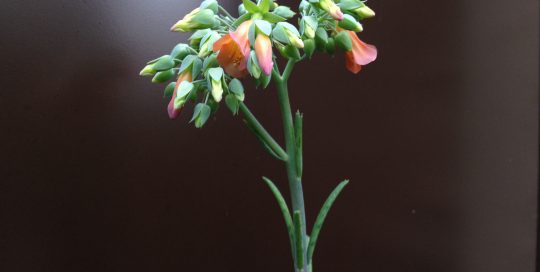Amaranth is Nutritional and Easy to Grow
Views: 4912

For years I have wandered by this strange plant with long red fuzzy blooms without much thought. For some reason this year I decided to see what the Amaranth plant is all about.
It turns out that, besides being an interesting plant to display in a hanging basket, Amaranth has a long history of being a staple grain among a variety of cultures. Its cultivation dates all the way back to the 1400s, when it was a large part of the Aztec diet. In fact it was so important that Amaranth was a part of many religious ceremonies. Because of its religious significance, possession of the plant was actually outlawed after the Spaniards conquered the Aztecs in 1521, since they were fervently trying to convert the remaining natives to Catholicism. However, it’s hard to keep a good plant down, and Amaranth seeds were eventually dispersed all over the world, where it became and continues to be an important food source in many cultures.
Nutritional Benefits of Amaranth
Amaranth leaves and seeds are both very nutritious and the plant is exceptionally adaptable to different growing conditions, even poor dry soil.
This makes it a very important food source for people in places like sub-Saharan Africa, where water resources are often scarce. It is very high in calcium, iron, magnesium, phosphorous, and potassium. It is also gluten-free, high in protein and fiber, and the only grain known to contain vitamin C. Amaranth contains two amino acids, which makes it one of the few “complete” grains.
Young Amaranth leaves make good salad greens, while you can cook the older leave to replace spinach in any recipe.
Caring for Amaranth
Whether grown ornamentally or as a food source, caring for Amaranth plants is very easy. All they need are warm temperatures, consistent moisture when young, and plenty of sunshine.
This may be the ideal plant for those lacking a green thumb, since they handle neglect with ease. Most varieties reseed easily, so deadheading is a good idea if you don’t want a garden full of Amaranth (unless of course, you want to harvest the seeds).
Harvesting Amaranth Seeds
Seeds are ready for harvest when they fall easily from the plant.
Cut the faded flowers from the plant and lay on cloth or in a paper bag to dry for a few days. Then release the seeds by gently rubbing the flower heads between your hands (wearing gloves) or by beating them inside a bag, or over a cloth. To separate the seeds from the chaff (remaining dried plant material), place in a shallow bowl and swirl so the chaff rises to the top. Scrape this off and remove the remaining chaff by sifting through a window screen or by winnowing in a gentle breeze. Pop the seeds in a hot skillet or boil them in water.
Meet Abbi Hayes
Abbi's Recent Posts

Kalanchoe delagoensis: Mother of Millions







